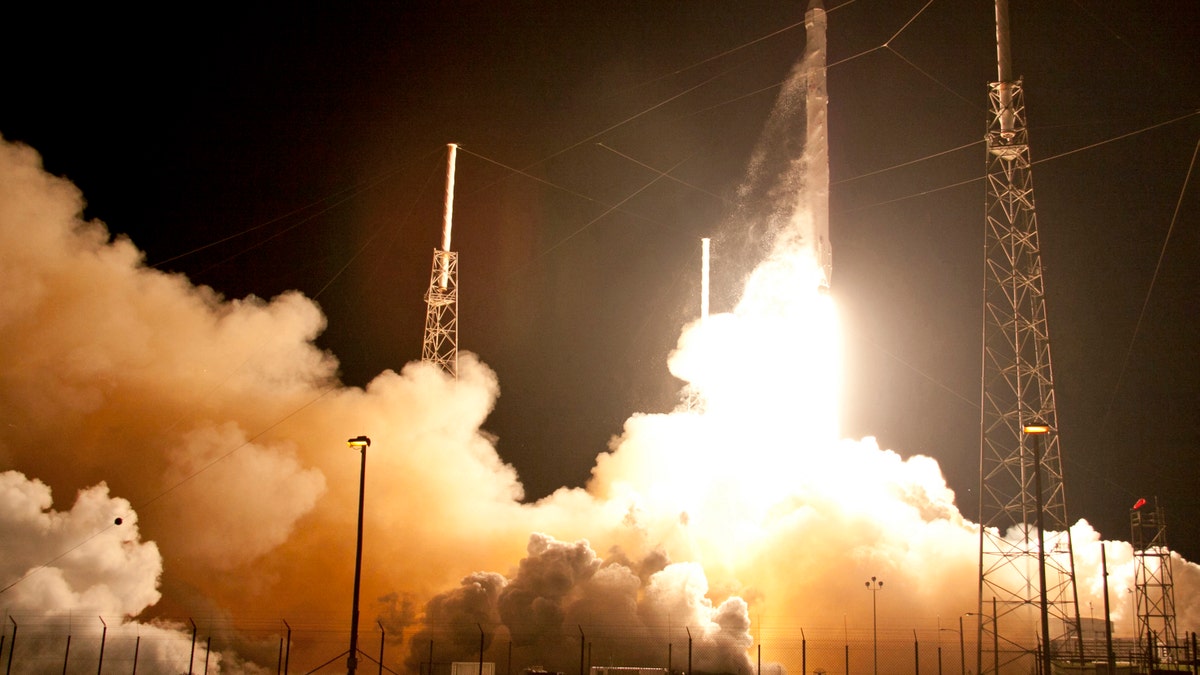
The Falcon 9 SpaceX rocket lifts off from Space Launch Complex 40 at the Cape Canaveral Air Force Station in Cape Canaveral, Fla., Saturday, Jan. 10, 2015. (AP Photo/John Raoux)
SpaceX may have narrowly failed in its audacious attempt to land a booster rocker on an ocean barge, although experts say the space company deserves praise for coming so close to achieving its goal.
The firm’s Falcon 9 rocket blasted off from Cape Canaveral, Fla. on Jan.10, successfully taking its Dragon supply ship on a mission to the International Space Station. In a bold experiment, SpaceX attempted to land the first stage of the unmanned Falcon rocket on a platform floating a couple of hundred miles off Florida’s northeastern coast. The booster, however, came down too hard and broke apart, according to SpaceX founder Elon Musk.
"Close, but no cigar this time," he tweeted, adding that the landing attempt bodes well for the future.
Experts are impressed that SpaceX guided the booster to hit such a relatively small target. The landing platform is just 300 feet by 100 feet, with wings stretching the width to 170 feet.
John Logsdon, professor emeritus of political science and international affairs at George Washington University's Space Policy Institute, described the landing as “a significant, if partial success.”
“Guiding the rocket's first stage from the point where it separated from the second stage back to a possible landing on a small target miles away is impressive, even if it did not slow down enough for a successful landing,” he wrote, in an email to FoxNews.com.
Professor Jim Bell of Arizona State University’s School of Earth & Space Exploration agrees that the rocket’s hard landing is worthy of praise.
“It is indeed an incredible success that on such an early attempt they were able to get that first stage so close to the intended landing pad, and so close to a successful landing!,” he explained in an email. “It really is an amazing and important achievement -- one small step, as it were, towards potentially significant decreases in the cost of space launches.”
Bell is also confident that SpaceX’s engineers have excellent telemetry and other data that will allow them to improve the system for future attempts. “That is the beauty of having a long-term vision and plan, as SpaceX does,” he added. “Each individual test, fully successful or not, provides important input to the next.”
On Jan.10 Musk tweeted that the booster rocket’s grid fins ran out of hydraulic fluid right before landing. “Upcoming flight already has 50% more hydraulic fluid, so should have plenty of margin for landing attempt next month,” he added.
Musk maintains that recovering and reusing rockets is essential for bringing down launch costs and speeding up operations.
“This has been a holy grail,” Professor Scott Hubbard of Stanford University’s Department of Aeronautics and Astronautics, told FoxNews.com. “You can achieve economies of scale that will lower the cost – cost has been an enormous barrier to using space for commercial purposes.”
While the landing attempt has grabbed the headlines, it should not be forgotten that the mission’s primary objective was to deliver essential supplies to the International Space Space Station, Roger Franzen, technical manager of the Giant Magellan Telescope at the Australian National University’s Mount Stromlo Observatory just outside Canberra told FoxNews.com.
“With the primary mission fully achieved, the secondary [rocket landing] mission was probably an 80% success,” he explained, in an e-mail. “No one should underestimate the complexity of this engineering feat even as a hard landing and SpaceX should be applauded for the success that they achieved.”
The Dragon supply ship arrived at the space station Monday, delivering a shipment of much-needed groceries and belated Christmas presents.
The Associated Press contributed to this report.
Follow James Rogers on Twitter @jamesjrogers
